Today’s Current Affairs: 25th November 2025 for UPSC IAS exams, State PSC exams, SSC CGL, State SSC, RRB, Railways, Banking Exam & IBPS, etc
Table of Contents
Operation Pawan:

For the first time, Chief of the Army Staff (COAS) of India has recently paid homage to soldiers who laid down their lives during Operation Pawan, the 1987 Indian Peace Keeping Force (IPKF) mission in Sri Lanka.
- It was launched by the Rajiv Gandhi government in 1987, sending the Indian Peace Keeping Force (IPKF) to Sri Lanka to help quell the civil war between the Tamil and Sinhala communities.
- It was India’s first major overseas military campaign post-Independence.
- It was launched under the Indo-Sri Lanka Accord, 1987.
- It involved sending Indian troops into Sri Lanka to disarm the Tamil militant groups, including the Liberation Tigers of Tamil Eelam (LTTE), and restore peace.
- One of the most notable martyrs of Operation Pawan was Major Ramaswamy Parameswaran, a Param Vir Chakra recipient.
- ‘Operation Pawan’ formally ended in 1990 with the withdrawal of the IPKF.
- Although Sri Lanka has constructed a memorial acknowledging the IPKF’s role, the operation did not receive formal commemoration at the National War Memorial (Rashtriya Samar Smarak) in New Delhi.
- For decades, veterans and families sought formal recognition. In 2025, the Army finally acknowledged their long-overlooked sacrifice.
Obstructive Sleep Apnea: New Findings
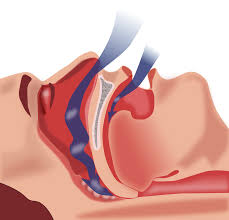
New findings reveal that untreated obstructive sleep apnea can significantly raise the likelihood of developing Parkinson’s disease.
- It is the most common sleep-related breathing disorder.
- People with OSA repeatedly stop and start breathing while they sleep.
- These breath pauses are known as apneas.
- There are several types of sleep apnea. OSA occurs when the throat muscles relax and block the airway.
- This happens off and on many times during sleep.
- Loud snoring is a telltale symptom of OSA. Anyone at any age can have OSA. But it’s most common in middle-aged and older adults.
- This condition has significant implications for cardiovascular health, mental well-being, quality of life, and driving safety.
- Treatment for OSA may include:
- Making lifestyle changes like sleeping position adjustments (not sleeping on your back) or maintaining a weight that’s healthy for you.
- Using a continuous positive airway pressure (CPAP) machine.
- Wearing oral appliances (mouthpieces).
- Undergoing surgery
- Parkinson’s Disease is a progressive neurodegenerative disorder that primarily affects movement.
- It causes nerve cells (neurons) in parts of the brain to weaken, become damaged, and die, leading to symptoms that include problems with movement, tremor, stiffness, and impaired balance.
Ningaloo Reef:
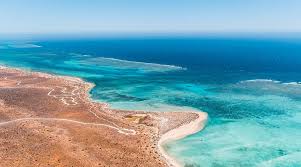
A new survey finds nearly 70% of corals at UNESCO-listed Ningaloo Reef have died.
- Ningaloo Reef is located on Western Australia’s remote coast along the East Indian Ocean.
- It is Australia’s largest fringing coral reef, extending across 300 kilometres of coastline.
- It is one of the world’s most pristine, longest, and largest coral reefs.
- The reef sustains both temperate and tropical marine life, including mammals and reptiles.
- Some of the mega marine species found here are manta rays, whale sharks, humpback whales, potato cod, dugongs, and sea turtles.
- It is a UNESCO World Heritage Site.
Hoya dawodiensis: New Plant Species
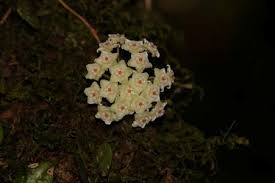
Arunachal Pradesh recently reported a major scientific milestone with the discovery of a new plant species, Hoya dawodiensis.
- Hoya dawodiensis is a new plant species.
- It was discovered in the Vijoynagar region in Changlang district, Arunachal Pradesh.
- Vijoynagar landscape, accessible only by air or multi-day treks, remains one of the least explored but biologically richest regions of the state.
- Hoyas constitute a diverse group of tropical flowering species, many of which are valued for their ecological roles and unique morphology.
- Hoyas are also known as wax plants or porcelain flowers because of their unique and beautiful flowers that look like they are made of wax.
- Hoyas are native to tropical and subtropical regions of Asia, Australia, and the Pacific Islands, but they can be grown indoors as houseplants in most climates.
- Hoya plants thrive in bright, indirect light.
- Hoyas prefer well-draining, airy soil.
- Hoyas are accustomed to high-humidity environments, though their waxy, thick leaves do help them tolerate periods of dry air.
Cuban gar:

Cuban scientists have taken restoration efforts in Cuba’s Zapata Swamp to save the Cuban gar from extinction.
- The Cuban gar (Atractosteus tristoechus), also known as the manjuarí, is a fish in the family Lepisosteidae.
- This fish is part of a family called “gars,” which have been around for about 100 million years.
- It is a tropical, freshwater species, although it also inhabits brackish water.
- Found in various habitats from large lakes and rivers to sluggish tributaries, backwaters and pools, and can survive in both fresh and brackish waters.
- It is found in rivers and lakes of western Cuba and the Isla de la Juventud.
- Gars are ambush predators feeding on smaller fishes and aquatic crustaceans in nature.
- It is also notable for its high tolerance of high ammonia and nitrate levels in water.
- It has the ability to breathe some atmospheric air in absence of sufficiently oxygenated water.
- Threats: Habitat loss, and introduction of invasive species African walking catfish.
- Conservation Status
- IUCN: Critically Endangered.
Manchurian Walnut Tree:

Researchers found that plant leaves from the Manchurian walnut tree showed extraordinary weed-killing potential.
- Manchurian Walnut Tree is a hardy deciduous tree known for its robust growth and adaptability to a range of soil types.
- It is found in Manchuria (China) and also grows on the Korean Peninsula and in the Far East of Russia.
- It grows well in the well-drained fertile soils with a neutral p It is highly cold-resistant.
- The plant is widely used in pharmaceuticals and folk medicine. Preparations made from Manchurian walnuts have a strong analgesic, antifungal, and antiparasitic effect
- Green fruits are used to make jams, and wood is used in furniture production.
Abujhmadiya Tribe:
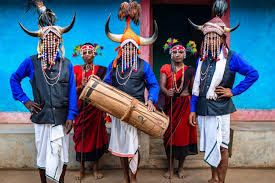
The Bastar Olympics’ tournament has seen increasing participation of the Abujhmadiya tribe.
- They are an ancestral and patriarchal tribe primarily residing in the Abujmarh region in Chhattisgarh, India.
- Abujhmadiya tribal community is a sub-group of Gond tribe of Central India region.
- They speak Abuj Maria, Hindi or Chhattisgarhi.
- They follow a form of animism, worshipping nature spirits and deities associated with natural elements.
- They celebrate “saja festival”, to honor nature spirits and good harvest. They also celebrate Bastar Dussehra.
- They primarily engage in subsistence agriculture, cultivating crops like rice, maize, and pulses. They also practice hunting, fishing, and gathering forest products.
- Their society is organized into clans, each with its own customs and traditions.
- It is a Particularly Vulnerable Tribal Group (PVTG).
Exercise SURYAKIRAN XIX – 2025:
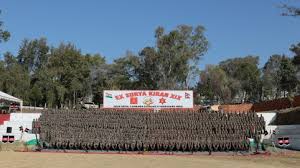
The 19th edition of the “Exercise SURYAKIRAN XIX – 2025” commenced at Pithoragarh, Uttarakhand.
- It is the joint military exercise conducted between India and Nepal.
- The Indian contingent is being represented mainly by troops from the ASSAM Regiment.
- It is an annual event conducted alternately in both countries.
- The aim of the exercise is to jointly rehearse conduct of Sub Conventional operations under Chapter VII of the United Nations Mandate.’
- Scope: To strengthen battalion-level synergy in Jungle Warfare, Counter-Terrorism Operations in Mountainous Terrain, Humanitarian Assistance & Disaster Relief (HADR), Environmental Conservation, and Integrated Ground–Aviation Operations.
- It will focus on incorporating niche and emerging technologies, including Unmanned Aerial Systems (UAS), drone-based ISR, AI-enabled decision support tools, unmanned logistic vehicles and armoured protection platforms, enabling both armies to refine and adapt Tactics.
- Both sides will exchange views and practices of joint drills on a wide spectrum of combat skills.
- It will further enhance the level of defence cooperation between Indian Army and Nepal Army.
Capital Gains Account Scheme (CGAS), 1988:

The Ministry of Finance recently notified the Capital Gains Accounts (Second Amendment) Scheme, 2025, introducing changes to the Capital Gains Account Scheme (CGAS), 1988.
- It was introduced by the Central Government in 1988 to help taxpayers claim exemptions on long-term capital gains.
- Under Section 54 of the Income Tax Act, income from capital gains must be reinvested within 3 years to avoid tax liability.
- However, there could be instances when the due date for filing income tax falls during this specified tenure.
- If a taxpayer is unable to invest in such a short period of time, they can deposit such underutilised capital gains under CGAS.
- However, taxpayers must deposit such funds before filing their Income Tax Returns.
- Investing the gains in this account is treated the same as direct reinvestment for exemption purposes.
- However, short-term capital gains are not eligible for the CGAS, as exemptions apply only to long-term capital gains.
- Any taxpayer who earns long-term capital gains and wants to claim exemption can deposit in the CGAS.
- This includes Individuals, Hindu Undivided Families (HUFs), Companies, Trusts, and any other person eligible for capital gains exemption.
- The scheme is mainly used when the taxpayer is unable to reinvest the capital gains before the due date of filing their income tax return but intends to invest within the specified period to claim exemption.
- The deposited amount must then be used within the stipulated period to invest in the eligible asset; otherwise, it will be treated as taxable capital gain in the year the deadline expires.
Capital Gains Accounts (Second Amendment) Scheme, 2025:
- Previously, CGAS deposits were largely limited to public sector banks and a few older institutions.
- Under the new notification, all non-rural branches of 19 major private banks are now authorised to receive deposits and maintain CGAS accounts.
- The “non-rural branch” condition means that only branches at centres with population 10,000 or more (per 2011 census) are in scope.
- The amended scheme explicitly defines ‘electronic mode’ of deposit to include credit/debit cards, net banking, UPI, IMPS, RTGS, NEFT, BHIM/Aadhaar Pay etc.
Special Leave Petition:
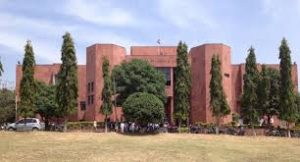
The Jammu & Kashmir and Ladakh High Court recently observed that dismissal of a Special Leave Petition (SLP), whether by a speaking or non-speaking order, does not lead to merger of the impugned order with the Supreme Court’s order.
- A SLP is a request made to the Supreme Court of India seeking special permission to appeal against any judgment, order, or decree from any court or tribunal (except military tribunals), even when the law does not provide a statutory right of appeal.
- In other words, SLP is not a right—it’s a privilege granted by the Supreme Court at its discretion.
- Article 136 states that the Supreme Court may, in its discretion, grant special leave to appeal from any judgment, decree, determination, or order from any court or tribunal in India.
- It can only be exercised when a substantial question of law or gross injustice has been committed.
- A judgement, decree, or order need not be final for an SLP. An interim or interlocutory order, decree, or judgement can also be challenged.
- It is a discretionary/optional power of the SC, and the court can refuse to grant the appeal at its discretion.
- The aggrieved party can’t affirm a special leave to offer under Article 136 as a right.
- SLP can be filed by:
- Any aggrieved party (individual or business)
- Government bodies
- Public sector undertakings
- NGOs or associations (in relevant cases)
- The key requirement is that the party must be aggrieved by the impugned judgment or order.
- An SLP can be filed for any civil or criminal matter, etc.
- SLP can be filed against judgments from:
- High Courts
- Tribunals (except those under armed forces)
- Quasi-judicial bodies
- It can be filed against any judgment of the High Court within 90 days from the date of judgment or
- It can be filed within 60 days against the order of the High Court refusing to grant the certificate of fitness for appeal to SC.
- A SLP must contain all the facts upon which the SC is to decide, which revolve around the grounds on which an SLP can be filed.
- The said petition needs to be duly signed by an Advocate-on-Record.
- The petitioner must include a statement within the SLP stating that no other petition has been filed in a High Court.
- Once the petition is filed, the SC will hear the aggrieved party and depending upon the merits of the case, will allow the opposite party to state their part in a counter affidavit.After the hearing, if the court deems the case fit for further hearing, it will allow the same; otherwise it will reject the appeal.




